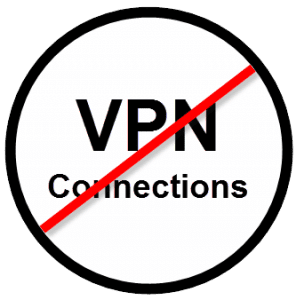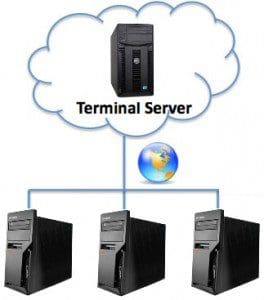The Perfect PCLaw Setup For Multiple Office Firms
Many of our clients use PCLaw to handle their accounting and time capture for their firm. In many instances our clients have opened remote offices with a goal to have remote attorneys bill and capture time through PClaw. While the idea works and can be done, success depends on the technology used. There are many ways to access a database or documents remotely but with PCLaw you really have to follow a few rules in order to get this project done right. PClaw’s database is fickle, it doesn’t like to work with desktop clients with a spotty network connection which means Wifi is automatically out. Yes, working in PCLaw off your office Wifi is NOT supported by PCLaw. They will tell you that it heightens the risk of corruption within the data set causing you to have to repair and often times restore the data set completely which can result in lost time. Within this line of thinking we can also rule out any kind of VPN Access. A VPN is a Virtual Private Network, if you have a VPN client on your PC and you try to connect to your office’s VPN host, what your actually doing is making your remote computer part of the office network, or part of a virtual network within your office network. Where PClaw has an issue is that PCLaw data has to stream over this network to your desktop client. VPN’s are notoriously slow and WILL cause database problems if you start transferring PCLaw data at slow speeds to your desktop client, this is not a good solution.

We have to rule out any solutions that make the PCLaw data travel from the server to a remote desktop client off of local office network, including Wifi. The answer is remote desktop. Remote desktop is exactly how it sounds, you remote in to a desktop connected to your office network, in this case, the desktop is onsite where the PCLaw data set is located. When you remote into your desktop, your not transferring data from your remote machine to the PCLaw data store, PCLaw is talking to a machine on the network that you are remoted on to. While you are offsite, you are remoting in to an onsite PC that is connected to the local network.
Now that we have that understood, how to we do this in a cost efficient way? Most of our clients only have a handful of people remoting in from the outside. Keep in mind, the remote user needs to remote into some free PC on your network to access PCLaw. Small clients like us to purchase workstations for their remote users. They sit in the server room ready to be remoted onto for PCLaw access. Some of our small clients even try to set times for their attorneys to log in and record billing time. With a workstation, only one person can remote in at one time.


While this is not a bad idea for a small amount of remote users, there are much better ideas. Others purchase a server with the ability to accept a certain amount of concurrent connections at the same time, these are called Terminal Servers. The more connections you need, the more connection licenses you buy and the more powerful the server. We like this solution because everything is in a more centralized location. The Terminal Server is housed in your office. All users remote onto one piece of hardware making maintenance and upgrades a breeze. When it comes to cost, a workstation can be $600 when compared to a server which can be $2,500 and even more depending on the remote user base. The fact is that you’ll have the server longer, maybe 7 years. The workstation will most likely die after 3 years, that’s about the life of workstations these days.


Here’s another idea, if you don’t want to buy hardware, you can always lease a hosted/remote server from a server hosting company who hosts it for you at a remote location. It’s expensive but it works very well as long as you pay for adequate speed and processing power. For a small firm with 10 people, I would say your monthly bill should be around $450. I’m getting my pricing from Rackspace, they’re a top hosting company. They basically give you a server and it’s your IT companies job to install PCLaw, Microsoft licensing, and maintain it. In this scenario, not only your remote users will have to remote into PCLaw, but so will your main office. The benefit is that it will be up and available 24/7, but that’s about the only benefit. At $450/month, you can buy a kick-ass server in the first year plus antivirus software for your network and a firewall. When I think about it, you can get a lot of useful IT for your firm at $5,400, a lot more than just a terminal server to be honest. But in the end it’s your decision. We’ve worked with many firms and performed all these setups including learning from VPN and Wifi issues. Any form of remote desktop is the answer, it just depends on how you apply it.


